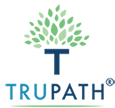What is the most common addiction? Is it alcohol or drugs? Or maybe gambling?
Addiction is defined as compulsive behavior that causes harm to oneself or others. The World Health Organization (WHO) estimates that around 20% of adults worldwide suffer from some form of substance abuse disorder.
Addiction is a complex condition that affects millions of people every day. Some forms of addictions are easier to treat than others, but they all require professional intervention. If you suspect someone has an addiction problem, seek help immediately.
Alcohol Addiction and Dependence
- Drinking alcohol is addictive, and can cause serious health concerns. However, many people enjoy drinking with friends, family members, and colleagues.
- The first step in treating alcoholism is recognizing that you have a concern. You may be able to stop drinking on your own, but if you do not get treatment for alcoholism, you will likely continue to drink.
- The National Institute on Drug Abuse (NIDA), the U.S. Department of Health and Human Services, defines alcoholism as “a chronic disease characterized by impaired control over drug use, a high rate of relapse, and physical and psychological dependence on alcohol.”
- Alcoholism is one of the most common types of addiction, impacting more than 10 million Americans each year. It is estimated that about 5 percent of men and 2 percent of women meet the criteria for full-blown alcoholism.
- This means that at any given time, 1 out of 25 men and 1 out of 50 women are actively abusing alcohol.
- Alcoholism is often referred to as a disease because it damages the body. In fact, alcoholics lose about half their brain cells every decade after they start drinking heavily.
- As with other diseases, there are ways to prevent alcoholism. For example, children who grow up in homes where both parents drink excessively are less likely to develop this disease later in life.
- There are also treatments available to help those suffering from alcoholism. These include medications, counseling, and various therapies.
Illicit and Prescription Drug Abuse and Addiction
- Drugs are highly addictive substances. They can affect the brain and nervous system, causing changes in mood, perception, thoughts, feelings, memory, coordination, sleep patterns, appetite, and sex drive.
- Drugs come in different shapes and sizes, including pills, liquids, powders, patches, sprays, inhalants, and injections. There are thousands of prescription and non-prescription drugs currently available. There are various different categories of drugs as well including opioids, benzodiazepines, sedatives, and stimulants to name a few.
- Some drugs are legal, while others are illegal. Illegal drugs such as heroin, cocaine, marijuana, ecstasy, LSD, methamphetamine, and PCP are known to cause addiction.
- Heroin, cocaine, and methamphetamine are very dangerous when abused. People addicted to these drugs experience withdrawal symptoms when they try to quit using them.
- People who become addicted to drugs usually begin taking them to feel better or cope with stress. But once they start using drugs regularly, they find themselves unable to function without them.
- People who abuse drugs typically take more and more of them until they reach a point where they no longer want to stop using them. At this stage, they are considered dependent on the substance.
Addiction to Nicotine: Cigarettes, Vapes, Chewing Tabacco, & More
- Nicotine is another popular drug that causes addiction. Nicotine is found naturally in tobacco leaves, but it must be processed before it becomes usable.
- Tobacco plants contain nicotine, which is converted into an alkaloid called nornicotine. Nornicotine is then transformed into an even stronger chemical called anatabine.
- This process takes place inside the plant’s leaves and stems. When the tobacco plant dies, the leaves turn brown and fall off.
- After the tobacco plant has been harvested, farmers remove the leaves and stem from the stalks. They dry the leaves and store them in barns. Tobacco leaves are used to make cigarettes, cigars, snuff, chewing tobacco, and pipe tobacco.
- The nicotine in tobacco acts like a stimulant, making people feel alert, energetic, and sociable.
- The nicotine in tobacco is absorbed by the lungs through the mouth and nose. Once inside the body, nicotine travels to the brain, where it affects several parts of the central nervous system.
- In the brain, nicotine stimulates the release of dopamine, a neurotransmitter that helps regulate emotions, concentration, motivation, pleasure, and reward. This makes people feel happier and calmer.
- When taken orally, nicotine enters the bloodstream quickly and reaches the brain within 30 minutes. It stays there for about one hour.
- When smoking tobacco products, such as cigarettes, e-cigarette vapes, or cigars, smokers inhale nicotine-laden smoke into their lungs. The nicotine is absorbed directly into the bloodstream via the lungs’ capillaries.
- Once nicotine reaches the brain, it binds to nicotinic acetylcholine receptors (nAChRs). These receptors help transmit messages between nerve cells.
- Receptors located in the brain’s cortex and hippocampus respond to nicotine. In addition, receptors in the basal ganglia help control movement.
- These receptors also play a role in memory formation. Smoking tobacco can lead to addiction because it triggers changes in the brain’s reward circuitry.
Sexual Addictions
- Sexual addictions have become increasingly common over the past few decades. According to some estimates, as many as 10% of men and 3% of women suffer from sexual compulsively.
- While most sex addicts engage in compulsive sexual behavior at least occasionally, only a small percentage of those who seek treatment report having engaged in sexually addictive behaviors every day.
- Sexual addictions often develop in adolescence due to hormonal changes. Some teens experiment with different types of sex, such as oral sex, anal sex, or group sex.
- Some teens may begin experimenting with pornography. Others may masturbate excessively. Still, others may experience frequent erections during sleep.
- By adulthood, most people have developed a healthy sense of sexuality. However, a minority of individuals continue to struggle with compulsive sexual thoughts and urges.
- According to experts, these individuals have a condition known as hypersexuality. Hypersexuality is characterized by persistent and intense sexual fantasies, urges, and urges acting on these urges.
- Hypersexuality is not considered an addiction per se, but rather a symptom of another disorder. For example, hypersexuality is sometimes associated with bipolar disorder, obsessive-compulsive disorder, depression, anxiety disorders, or eating disorders.
- Hypersexuality is treatable using cognitive behavioral therapy (CBT) and other therapies. CBT teaches patients how to identify and change negative thought patterns and unhealthy habits.
Gambling Addiction
- The term “addiction” refers to any repeated behavior that causes physical or psychological harm to oneself or others.
- Gambling is defined as a form of gambling that involves risking money or something else of value. Gambling includes playing games of chance like roulette, poker, blackjack, dice, slot machines, and lotteries.
- In fact, gambling has been around since ancient times. People played games of chance even before they discovered writing.
- Today, gambling is popular worldwide. Millions of people gamble each year.
- According to one estimate, approximately $100 billion is spent annually on gambling activities. This figure does not include illegal forms of gambling, which are estimated to be worth more than $200 billion.
Codependency (Relationship and People Addiction)
- Codependency is a condition that occurs when someone depends too much on another person for emotional support. Codependent relationships are usually romantic in nature.
- Codependents tend to feel guilty about their feelings of dependence. They believe that if they don’t depend on their partner, then he or she will leave them.
- Codependency can also occur within families. Parents who are codependent may try to control their children’s lives through excessive supervision and criticism.
- Codependency is quite common among alcoholics, drug abusers, and sex addicts. In fact, many people who suffer from alcoholism or drug abuse also exhibit signs of codependency.
- Codependency is treated with the same techniques used to treat other addictions. Cognitive Behavioral Therapy (CBT), Dialectical Behavior Therapy (DBT), and Family Systems Theory are all effective methods for treating this condition.
 Self-Harm Addiction
Self-Harm Addiction
- Self-harm is defined as deliberately harming yourself in some way. Self-harming behaviors range from cutting to burning to overdosing on pills.
- Most people who engage in self-harm are trying to cope with stress. Sometimes, however, self-harm becomes addictive.
- Self-harm is often seen in conjunction with other mental health conditions such as depression, anxiety, and borderline personality disorder.
- Addicts who self-injure are typically treated with the same medications and therapies that are used to treat substance use disorders.
Addiction to Prescription Painkillers
- A painkiller addiction is an addiction to prescription drugs that relieve pain. Painkillers come in several types including opiates, non-opiate analgesics, muscle relaxants, anti-inflammatories, and sleep aids.
- Opioids are the most commonly abused pain relievers. These drugs work by binding to opioid receptors in the brain.
- Opioid receptor sites are found throughout the body. When opioids bind to these sites, they produce a feeling of well-being.
- The problem with opioids is that they have powerful effects on the central nervous system. If taken over time, they can cause tolerance and physical dependence.
- When opioids are discontinued, withdrawal symptoms appear. These symptoms include sweating, nausea, vomiting, diarrhea, shivering, insomnia, and restlessness.
- Non-opiate analgesics like aspirin and acetaminophen are also widely abused. Muscle relaxants such as Valium and Xanax are sometimes misused as sleeping aids.
- Analgesic addiction is treated with medication and therapy. Medications such as methadone and buprenorphine help reduce cravings.
- Therapy includes cognitive behavioral therapy, dialectical behavior therapy, and family systems theory
Internet and Gaming Addiction
- In the past few years, Internet addiction has become more prevalent than ever before. The World Health Organization estimates that there are nearly 2 billion users worldwide.
- According to the National Institute of Mental Health, approximately 5% of teens and young adults meet the criteria for internet addiction.
- People who develop internet addiction tend to be highly social and outgoing. They may spend hours online chatting with friends and playing games.
- They may also spend excessive amounts of time watching videos, reading news stories, and surfing the web.
- This type of behavior usually begins when someone feels lonely or bored. As their need for stimulation increases, they turn to the Internet instead of interacting with real life.
- Internet addicts may feel depressed or anxious if they don’t get enough stimulation from their computer screens.
- Some people who suffer from this condition may even begin to neglect their personal hygiene.
- Treatment for internet addiction involves counseling, group therapy, and medication.
Marijuana (Weed) Addiction
- Marijuana is one of the most popular recreational drugs in the world. It’s legal in many states, but it isn’t completely safe.
- Marijuana contains chemicals called cannabinoids. Cannabinoids affect how your brain works.
- These chemicals interact with cannabinoid receptors in the brain. This interaction produces feelings of euphoria and relaxation.
- Cannabinoid receptors are located in the brain, lungs, liver, kidneys, pancreas, heart, spleen, stomach, and intestines.
- Cannabinoids are also found in marijuana plants. People smoke marijuana because it gives them a high.
- It’s not clear why some people experience negative side effects while others do not. Some people report experiencing anxiety, paranoia, panic attacks, and hallucinations. Other people report having no adverse reactions at all.
- There is no cure for marijuana addiction. Treatment focuses on helping patients cope with cravings and other withdrawal symptoms.
Summary
To conclude, there are many types of addiction and each person experiences these addictions differently. The best way to treat addiction is by seeking professional treatment.
